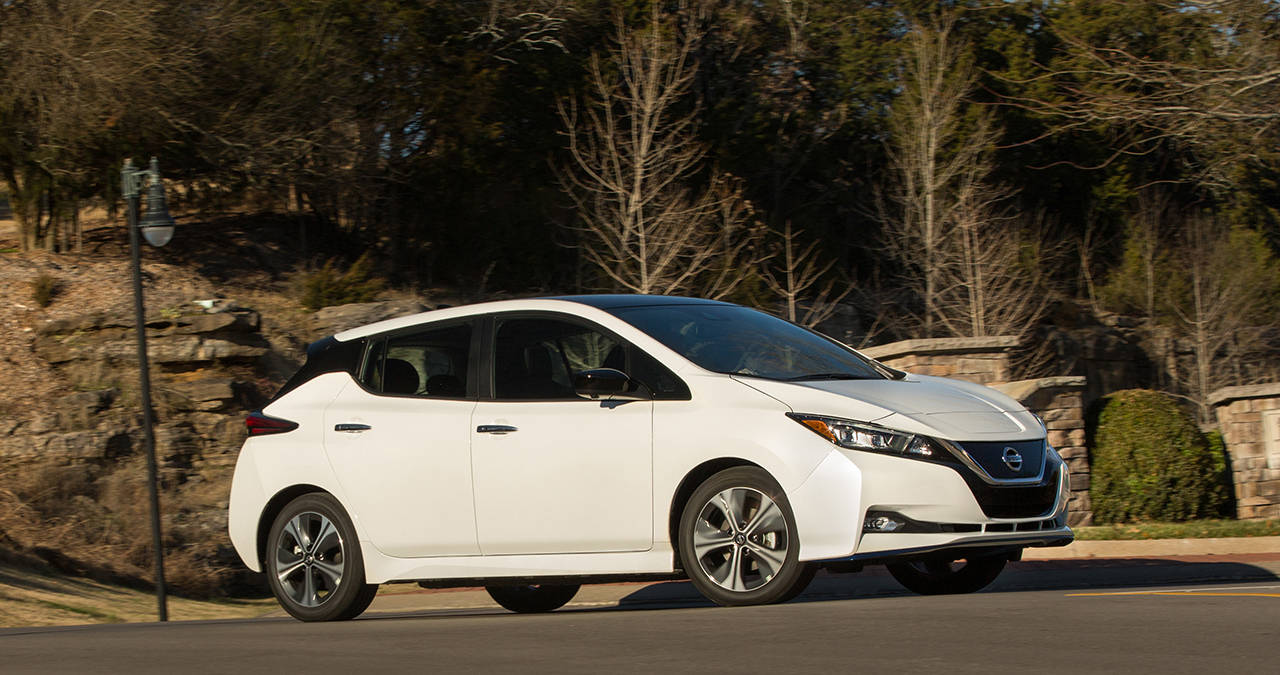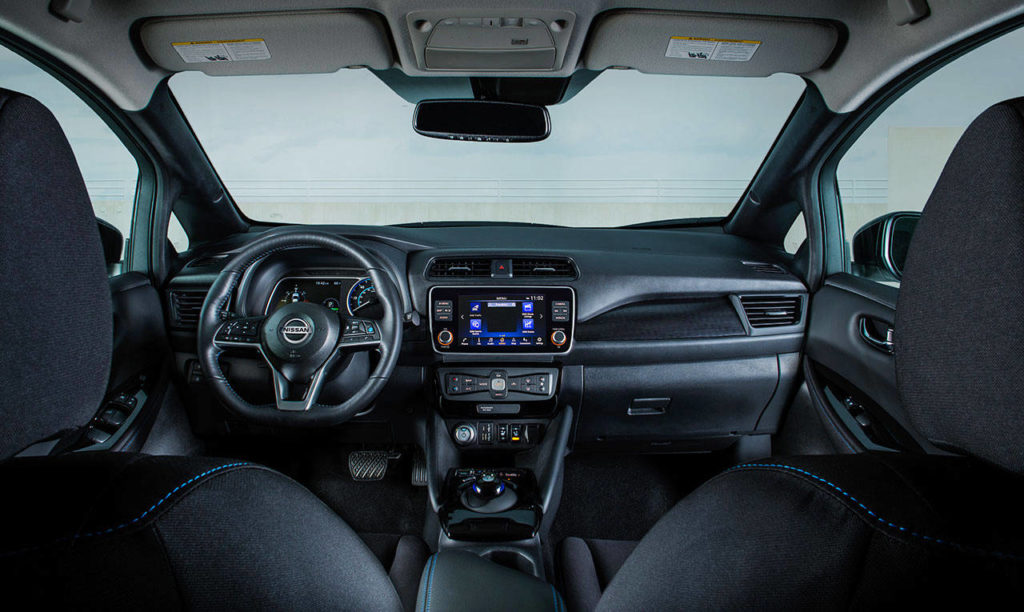Nissan’s fully electric Leaf compact hatchback moves into its 10th anniversary year for 2020. Introduced in 2010, the Leaf was one of the earliest all-electric vehicles on the market and has been one of the best selling among them.
For 2020, every Leaf model gains extra features as standard equipment. A checklist of safety and driver assistance technology now included on all models adds automatic emergency braking with pedestrian detection, rear automatic braking, rear cross traffic alert, blind spot monitoring, lane-departure warning, lane keeping assist, forward collision warning, and high beam assist.
Also added to every Leaf model are driver and front passenger knee airbags, and rear seat-mounted outboard side-impact airbags.
An 8-inch touchscreen display for the infotainment system is now standard on Leaf S and SV models, and all Leafs now come with Android Auto and Apple CarPlay capability.
A technology package for the Leaf SV is upgraded to include driver alertness monitoring and a 360-degree camera system.
The tone and volume of Leaf’s two pedestrian safety sounds have been revised to meet the updated U.S. electric vehicle regulations going into effect this September. To make the sounds more noticeable, an extra speaker was added inside the engine compartment.
There is also a new premium paint color option called Sunset Drift ChromaFlair.
The 2020 Nissan Leaf is available in S, SV, S Plus, SV Plus, and SL Plus types. The first two have a 40 kWh battery pack generating 147 horsepower and 236 lb-ft of torque with a total range of up to 149 miles. The Plus models have a 214-horsepower, 250 lb-ft, 62 kWh battery with a range of 215 or 226 miles, depending on trim level.
Pricing with the destination charge included starts at $32,525 for the S trim and goes up to $44,825 for the SL Plus. All Leafs are front-wheel drive and have an automatic transmission.
I drove the 2020 Nissan Leaf SL Plus model, whose total range is 215 miles. It has a 100 kW quick charge port enabling charging at public DC fast charging stations, where its 62 kWh battery takes about 45 minutes to reach an 80 percent charge level. Charging can also be done, at a much slower pace of course, using a standard household three-prong 120V outlet or a 240V outlet. For everyday driving, putting your Leaf to bed in the garage and leaving it plugged in overnight is a nearly effortless, timesaving routine. There’s also a charging timer so you can set the charge time.
The Leaf has an e-Pedal mode that switches the car to one-pedal operation. The driver can start the car, accelerate, decelerate and stop, using only the accelerator pedal. It imparts the feel of driving an extravagant hotel luggage cart but increases Leaf’s energy efficiency.
Standard features on the SL Plus model rival those of a conventional upscale compact car. To mention a few: heated front seats, heated steering wheel, eight-way power adjustable driver seat with two-way lumbar, seven-speaker Bose audio (the Energy Efficient Series, naturally), LED headlights, four USB ports, navigation, intelligent cruise control, and satellite radio.
I can’t say the Nissan Leaf is fun to drive. It has the acceleration-boosting torque you get from an electric car, which is always worth a lot, but it doesn’t have a sporty soul. It doesn’t even pretend to have one. But there’s an undeniable delight in driving the Leaf. The delight is generated by tooling around, in silence, never using any gasoline.
2020 NISSAN LEAF SL PLUS
Base price, including destination charge: $44,825
Price as driven: $45,745
Mary Lowry is an independent automotive writer who lives in Snohomish County. She is a member of the Motor Press Guild, and a member and past president of the Northwest Automotive Press Association. Vehicles are provided by the manufacturers as a one-week loan for review purposes only. In no way do the manufacturers control the content of the reviews.
Talk to us
> Give us your news tips.
> Send us a letter to the editor.
> More Herald contact information.



























